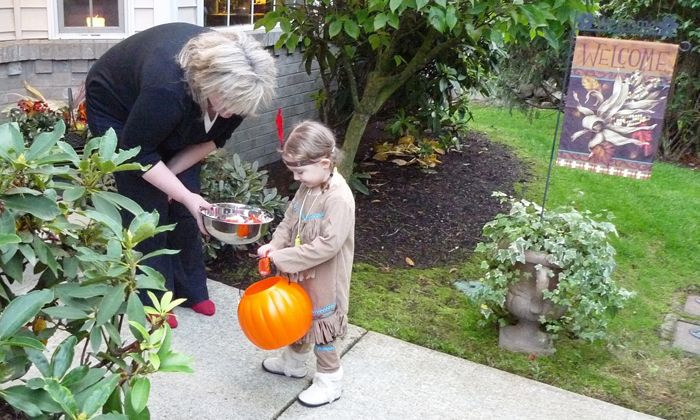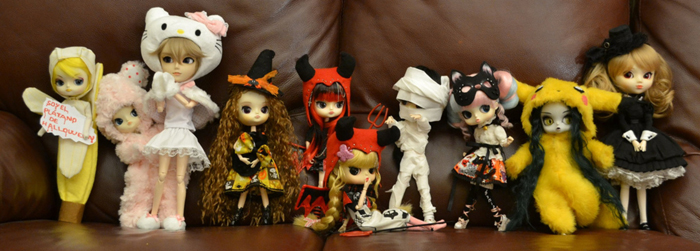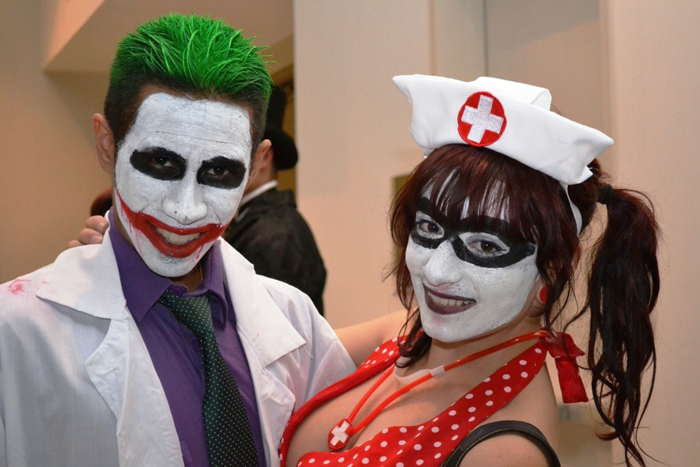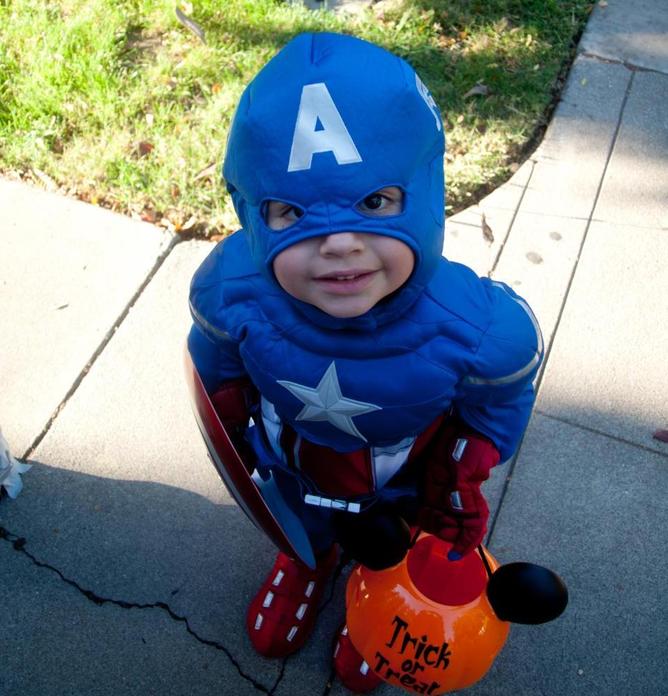
On Halloween, Does Anonymity Affect Candy Theft?

This article was originally published on The Conversation. The publication contributed this article to Live Science's Expert Voices: Op-Ed & Insights.
Halloween is upon us tonight and it’s all just a bit of harmless fun, right? Or is there truly a dark side to Halloween?
What should we make of kids getting together in groups, wearing costumes that hide their identity, and going from house to house asking for treats at the threat of a “trick”?
One dark Halloween night many years ago, some researchers decided to find out by hiding in houses throughout suburban Chicago, in the United States, and observing the behaviour of 1,039 children who were trick-or-treating by themselves or with other children (but not with adults).
The aim was to see if the children’s behaviour would be influenced by anonymity and/or the behaviour of the other children they were with (if they were in a group).
Look who’s knocking
When the experimenter greeted children at the door, some children were asked their names and where they lived (they were considered “identified”) while others were not (they were considered “anonymous”).

The front entrance to each house contained a table with a bowl of candy and a bowl of coins. The experimenter told the children they could take one piece of candy each, and then left them unattended.
As you may expect, when children were anonymous they stole more. Children who were by themselves stole 14% more when they were anonymous than those who gave their name and address.
But surprisingly, the anonymous groups of children stole more than twice as much (36%) as the identified groups.
So why were children more likely to steal when they were in an anonymous group compared to when they were anonymous and alone? After all, the children in the groups weren’t anonymous to each other whereas the children who were by themselves weren’t accountable to anyone.
What causes this?
The children in groups usually copied the behaviour of the child who acted first. So if the first child to approach the table stole money or candy, most other group members followed suit. Similarly, when the first child didn’t take extra candy or money, most other group members also didn’t.

The children who made the first move were more likely to steal if they were anonymous or in a group. So it appears that being in a group or being anonymous affected the children who were the first to act which then affected the behaviour of the rest of the group.
This phenomenon, where people’s inhibitions are lowered and they are more likely to violate social norms, this is what psychologists call deindividuation.
A meta-analysis of 60 studies found that deindividuated behaviours tended to occur when the behaviour was considered appropriate in that time and place. People were more likely to go against the wider societal norm if their behaviour was seen as normal within the situation or group.
This shifting of the norm explains why so many children in the Halloween study copied the first child in their group when they chose whether or not to steal the candy.
It’s all about the group’s norms. When the norm is to act violently, then that’s what people will do. But if the norm is to act compassionately, then they will act compassionately, as we see in the next case.
What about the costumes?
Costumes may set a standard for how people believe they should act. In one study, participants were instructed to wear either a nurse’s uniform or a Ku Klux Klan uniform, and then administer electric shocks to someone in another room at whatever intensity they felt was appropriate.
All participants were told they were part of a group wearing the same uniforms and administering shocks. They were told the other group members were sitting in separate cubicles. In reality, there were no other group members and there was no one actually receiving shocks.
Half the participants were identifiable to their group; they were told that the “other group members” would see a photo of them and everyone in the group would see the voltages of the shocks everyone delivered.
Participants actually saw fake shock voltages delivered by the “other group members” on their computer screen. The shock voltage could be between -3 and +3 and the fake voltages were programmed so that they eventually averaged out to 0.
The other half of the participants were anonymous to their group; the “other group members” didn’t know who else was in the group and no one in the group could see the voltages delivered.

Dressed to thrill
Regardless of anonymity, all people dressed as nurses delivered lower intensity shocks compared to those dressed as Ku Klux Klan members. This suggests that people felt more compassionate when they were dressed as nurses.
Interestingly, the anonymous nurses administered the lowest intensity shocks on average.
But why would the people dressed as nurses act nicer when they were anonymous compared to when they could see what their group was doing? Again it comes down to what people perceive the group norm to be.
Participants who were identifiable seemed to choose a shock intensity that was more in line with what they saw the “other group members” giving. Participants who were anonymous to their group had no information on how their group was behaving and had to use other clues to work out what the group norm would be.
Thus, the nurse’s uniform could have created a situational norm (be nice and give lower intensity shocks) which was counter to the general norm (when an experimenter tells you to shock someone, you turn up the voltage).
In the meta-analysis mentioned earlier, things such as costumes, anonymity and size of the group were found to only have a weak influence on deindividuated behaviours.
They may make people more likely to act in line with group norms, but they are not the main driving force behind deindividuated behaviours. At the end of the day, the driving force is the need to conform to situational norms.
The power of the group
Although the studies described above were carried out many years ago, I’ve found nothing that overturns or contradicts their findings so they still offer us important insights into how deindividuation occurs.

Most importantly, if an individual identifies with their group, the group’s norms are likely to be seen as right.
So back to Halloween. For parents who are worried that dressing up their child as a villian such as the Joker or some other evil character will make them more likely to behave badly, maybe dress them as a superhero instead.
And for those greeting trick-or-treaters tonight, maybe now is a good time to reduce anonymity by getting to know the kids in your neighbourhood.
Zenobia Talati does not work for, consult to, own shares in or receive funding from any company or organisation that would benefit from this article, and has no relevant affiliations.
This article was originally published on The Conversation. Read the original article. Follow all of the Expert Voices issues and debates — and become part of the discussion — on Facebook, Twitter and Google +. The views expressed are those of the author and do not necessarily reflect the views of the publisher. This version of the article was originally published on Live Science.
Sign up for the Live Science daily newsletter now
Get the world’s most fascinating discoveries delivered straight to your inbox.
Why is yawning contagious?
Scientific consensus shows race is a human invention, not biological reality










